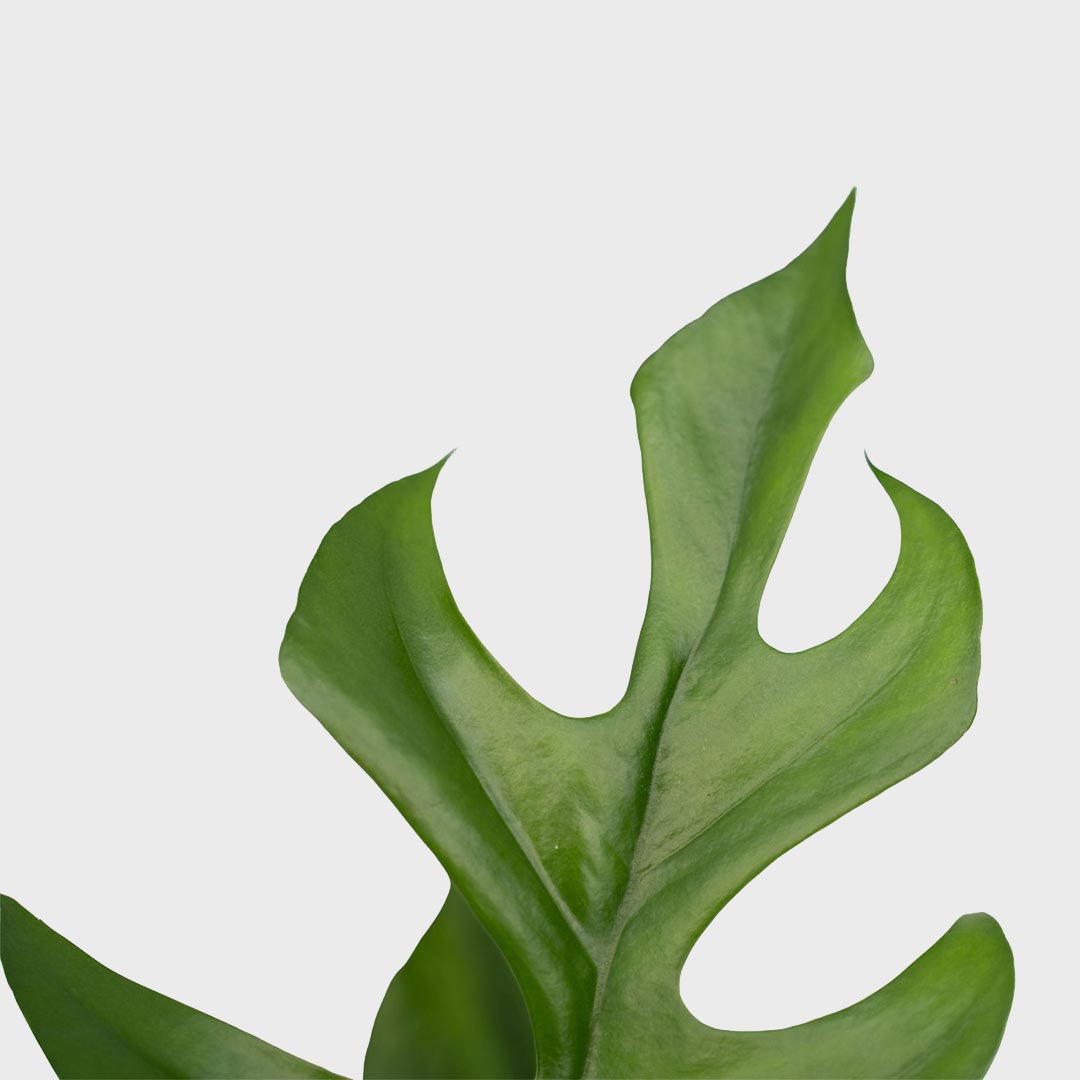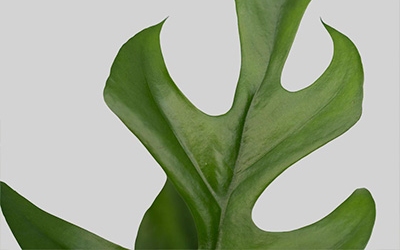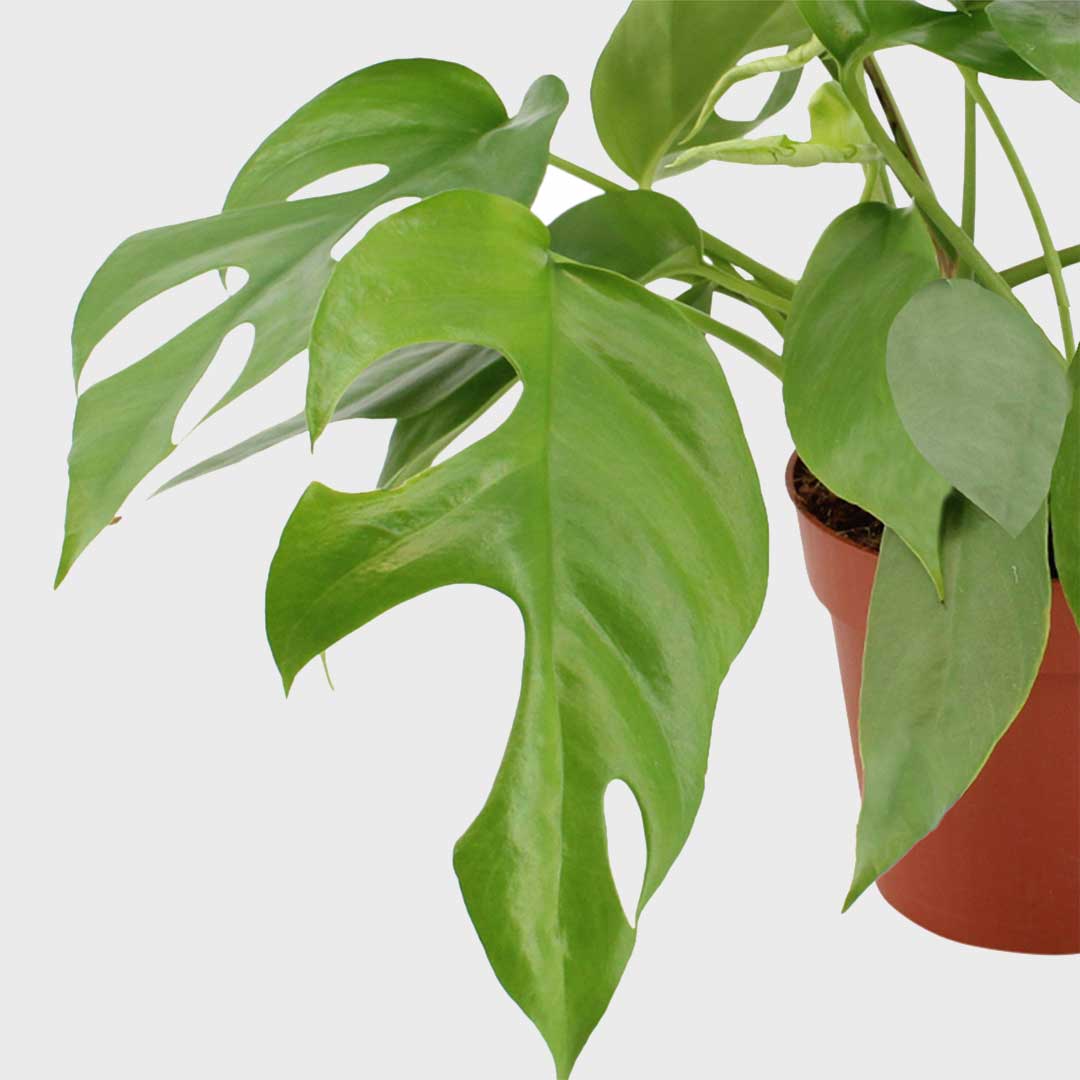
Deliver to
Europe
 English
English

TheRhaphidophora is great for homes and office spaces. Their leaves are eye-catching and add an exotic feel to the place. Rhaphidophora plants are easy to care for. The plant can is a real climbing plant what makes it a statement wherever you place it. You can also know the Rhaphidophora by the nickname of Mini Monstera.
Medium light
Water once a week
Toxic
Air-purifying
It is best to place the Rhaphidophora on a location with medium bright light to partial shade. Too much light will cause the leaves to turn yellow. The Rhaphidophora prefers a spot that's spacious. Don’t forget to turn the plant! The Rhaphidophora grows towards the sun and is a real creeper. If you do not rotate the plant will only get full on one side and that is what you want to prevent.
Rhaphidophora plants prefer a balanced level of moisture, not too wet nor too dry. Therefore, the best way to check if your plant needs water is to check the top centimetres of the soil. If it's dry, then you can water the plant. Watering once a week during is fine. It's better to skip a watering than to water too much. Overwatering can cause the roots to rot.
The Rhaphidophora uses a lot of energy from spring onwards to grow new leaves. As a result, the plant needs extra nutrients. You can provide these nutrients by plant nutrition. We recommend giving plant nutrition once a week from spring until autumn. After autumn and in winter it is better not to give extra nutrients. In the winter, plant nutrition can actually be harmful for the Rhaphidophora!
Repotting the Rhaphidophora is necessary every year. The plant is a fast grower, so its roots soon become too tight in the pot. We recommend repotting the Rhaphidophora immediately after purchase. Repotting the plant every year gives it new nutrients and more room for root growth. The airier soil is also very good for the water flowing through. The best period to repot is spring.
The most ideal temperature for a Rhaphidophora plant is typically between 18 to 29 degrees Celsius. It prefers a warm and tropical climate with moderate humidity.
Occasional pruning helps remove yellowed or damaged leaves, control the plant's size, and promote bushier growth. Trimming long or leggy vines can also help maintain a more compact and attractive shape. Clean and sharp pruning tools should be used to make clean cuts and avoid damaging the plant.
In general, the Rhaphidophora does not suffer a lot from diseases and vermin. The most common for this plant is the mealy bug. This can be treated with pesticide. However, it is wise to keep a close eye on the leaves of a Rhaphidophora.

